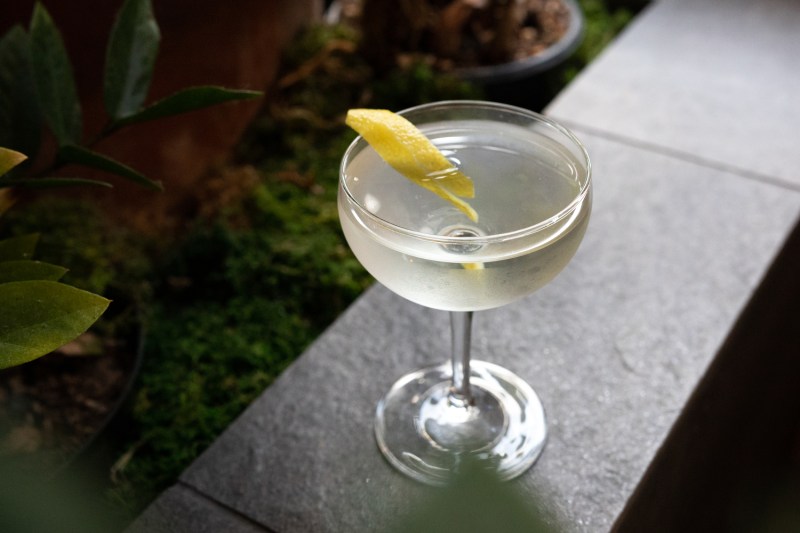
There are too many Asian spirits to count, but we’ve rounded up some of the most popular and worthwhile. From awamori to soju, this is your ultimate guide to the category. And we’ve even thrown in some delicious cocktail recipes for good measure.
Tired of bourbon and wine? Looking for something a little different? Go with something from afar, ready to be enjoyed neat or mixed into a drink. Our list includes commonplace sippers from places like China, Korea, and Japan.
We reached out to some experts and filled in the gaps with all the context you need to get a solid grasp on all things Asian spirits.
Awamori
Born in Okinawa, Awamori is a sibling of shochu, a distilled take on rice. Traditionally, it’s enjoyed with ice and water, but like vodka, it’s incredibly versatile and can be enjoyed neatly or mixed into an abundance of both savory and sweet cocktails. Usually made from Thai indica rice, awamori is fermented just once and then aged in a cellar.
Baijiu
This Chinese liquor is made from sorghum. It’s clear, and other grains may be used in the process, not unlike bourbon here in the States. The drink is often served neat before or during dinner in China, and lately, bartenders stateside have begun to create cocktails around it. Due to the unique fermentation process, Baijiu can span a range of flavors depending on where it’s made.
Japanese Gin
Lately, and for good reason, we’ve heard a lot about great Japanese whisky. It turns out the country is also behind some incredible gin. Increasingly, the nation is being lauded for its options, from flavorful versions of the spirit to stand-alones. While only popularized in the 20th Century, Japanese gin got its start 300 years earlier. Today, some awesome options are available, utilizing local ingredients when filling out the botanical bill.
Mekhong
A Thai drink through and through, Mekhong is pretty much a whiskey. It looks like bourbon in the glass but tastes more like an aged rum. It shows up most in a cocktail called Sabai, which fuses the spirit with club soda, lemon juice, and simple syrup (add some Thai basil leaves for added flair).
Mijiu
A Chinese rice wine made from rice, Mijiu tends to have an alcohol content similar to sake, somewhere in the range of 15-20 percent. Enjoy it on its own, or use it as a replacement for other clear spirits like gin or vodka. It can make a mean cocktail and serves well in a mixed drink as it’s not too hot, alcohol-wise.
Shochu
“Shochu is a clear white spirit that is distilled from grains and vegetables, specifically barley, sweet potato, and rice,” says Hitoshi Utsunomiya, the director of Japan Sake and Shochu Makers Association. “It is the native spirit of Japan, an incredibly rich spirit that is also very light and has a smooth finish. A distinctive ingredient of shochu is Koji, a sweet and fragrant mold that can be found in Asian foods such as miso and soy sauce. Shochu has over 500 years of history, with strong ties to its place of origin. The spirit is distilled only once and does not contain any additives or sugar, making it super-premium and clean.”
Utsunomiya also offered a link to learn more about the spirit.
Soju
Hailing from Korea, Soju was originally a rice-centric spirit but is now sometimes made from other grains, like cassava. The production of the clear liquor dates back to the 14th Century, and per Korean culture, it’s customary for the youngest to pour some out for the elders in the building. The same culture suggests it’s rude to fix yourself a pour, so sit back and let somebody else do it for you.
Umeshu
A Japanese plum liquor, Umeshu can be sipped like a wine or blended into a number of cocktails. In Japan, it’s common to have it on the rocks or as a sour. It can even be mixed with green tea, served cold or hot. With all that fruity goodness, it’s great as an addition to some of your favorite gin and whiskey cocktails.

Recipes
Tokyo Drifter
This drink from the good folks at Takibi in Portland utilizes an umeshu liqueur. The oxidized flavor of the stuff has a pinch of bitterness and works exceptionally well with the cascara soda.
Ingredients
- 3/4 ounce St. George Umeshu Liqueur
- 3/4 ounce Campari
- 3/4 ounce sweet vermouth
- 1/4 ounce lemon juice
- 3 ounces Stumptown “Strange Magic” Cascara soda
Method
- Shake everything but the Cascara soda with pebble ice, and add Cascara.
- Pour into Collins glass with new pebble ice.
- Garnish with lemon peel.
Carte Blanche
Here’s another great recipe from the same restaurant. Takibi says this is a modern take on the James Bond cocktails, with an addition of brandy and citrus. The Japanese gin plays a starring role, with some great complementary flavors surrounding it.
Ingredients
- 1 1/2 ounces Roku Gin
- 1 ounce Caperitif
- 1/2 ounce Clear Creek Cherry Brandy
- 1/4 ounce simple syrup
Method
- Stir all ingredients with ice, strain into a coupe, and garnish with lemon peel.
Don’t stop here. We’ve got more great and related content, from our review of an amazing strawberry-flavored gin from Japan to our guide to Chinese cuisine. Cheers!


